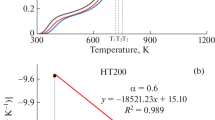Abstract
Same amounts of moisture were removed from Ximeng lignite (XL) with different particle size ranges pretreated at different drying temperatures. The effect of conventional drying on the grindability of the XLs was investigated. Increasing the drying temperature improved the grindability of all the samples. The results of scanning electron microscopy and mercury intrusion porosimetry revealed that the dominant mechanism enhancing the grindability of XL with high moisture was the pore structure destruction induced by the steam jet flow generated with the removal of moisture. Especially, the development of large fractures had a strong connection with the change in the grindability. According to the pore size distribution, the internal structure of the 2.5-4.0mm coal samples did not develop well under high drying temperature because of the exceedingly short heating time. Therefore, coal particle size, drying temperature, and heating time must be coordinated well to achieve the enhanced drying effect. The grindability of XL had a negative linear correlation with the pore volume fractal dimension, revealing the possibility of fractal dimension for the analysis of lignite grindability.
Similar content being viewed by others
References
M. Yi and J. W. Lee, Korean J. Chem. Eng., 33, 3401 (2016).
H. Choi, W. Jo, S. Kim, J. Yoo, D. Chun, Y. Phim, J. Lim and S. Lee, Korean J. Chem. Eng., 31, 2151 (2014).
S. W. Kingman and N. A. Rowson, Miner Eng., 11, 1081 (1998).
B. Csöke, L. Bokányi, J. Bõhm and S. Pethö, Appl. Energy, 74, 359 (2003).
D. Životić, A. Bechtel, R. Sachsenhofer, R. Gratzer, D. Radić, M. Obradović and K. Tojanović, Int. J. Coal. Geol., 131, 344 (2014).
H. B. Vuthaluru, R. J. Brooke, D. K. Zhang and H. M. Yan, Fuel Process Technol., 81, 67 (2003).
S. C. Chelgani, J. C. Hower, E. Jorjani, S. Mesroghli and A. h. Bagherieh, Fuel Process Technol., 89, 13 (2008).
E. Lester, S. Kingman and C. Dodds, Fuel, 84, 423 (2005).
P. C. Harrison and N. A. Rowson, I Chem. E Res. Event, 38, 292 (1997).
S. Marland, B. Han, A. Merchant and N. Rowson, Fuel, 80, 1839 (2001).
J. Lytle, N. Choi and K. Prisbrey, Int. J. Miner Process., 36, 107 (1992).
S. Marland, B. Han, A. Merchant and N. Ravson, Fuel, 79, 1283 (2000).
J. F. Zhu, J. Z. Liu, J. H. Wu, J. Cheng, J. H. Zhou and K. F. Cen, Fuel, 162, 305 (2015).
E. Lester, S. Kingman and C. Dodds, Fuel, 84, 423 (2005).
J. F. Zhu, J. Z. Liu, J. H. Wu, J. Cheng, J. H. Zhou and K. F. Cen, Fuel Process Technol., 130, 62 (2015).
P. Bevilacqua and G. Ferrara, Int. J. Miner Process., 95, 117 (1996).
M. M. Mahamud and M. F. Novo, Fuel, 87, 222 (2008).
J. Cheng, X. Wang, T. Si, F. Zhou, J. H. Zhou and K. F. Cen, Fuel Process Technol., 149, 49 (2016).
S. Hu, M. Li, J. Xiang, L. Sun, P. Li, S. Su and X. Sun, Fuel, 83, 1307 (2004).
W. Zuo, Y. Zhao, Y. He, F. Shi and C. Duan, Int. J. Mining Sci. Technol., 22, 121 (2012).
E. L. And and S. Kingman, Energy Fuel, 18, 140 (2004).
S. Samanli, Fuel, 90, 659 (2011).
X. Wang and R. He, Korean J. Chem. Eng., 24, 466 (2007).
W. I. Friesen and R. J. Mikula, J. Colloid Interface Sci., 120, 263 (1987).
K. S. W. Sing and R. T. Williams, Adsorpt. Sci. Technol., 22, 773 (2004).
J. Lai and G. Wang, J. Nat. Gas Sci. Eng., 24, 185 (2015).
K. Li and R. N. Horne, Geothermics, 35, 198 (2006).
Author information
Authors and Affiliations
Corresponding author
Additional information
This paper is reported in the 11th China-Korea Clean Energy Workshop.
Rights and permissions
About this article
Cite this article
Yang, Y., Liu, J., He, X. et al. Mechanism underlying the effect of conventional drying on the grinding characteristics of Ximeng lignite. Korean J. Chem. Eng. 34, 1250–1259 (2017). https://doi.org/10.1007/s11814-016-0355-4
Received:
Accepted:
Published:
Issue Date:
DOI: https://doi.org/10.1007/s11814-016-0355-4




